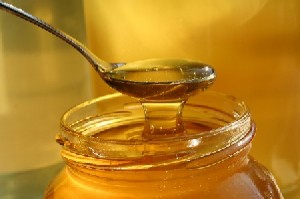I finally did it. I harvested my first batch of honey! It was not nearly as messy as I had expected it to be and I did get a nice batch off of my one of my producer hives in Varina, Virginia. The worst part was cleaning up the equipment after the extraction. I am pretty sure that everything else went smoothly (it seemed that way to me, at any rate.)

Once we hit mid-March this year, I had identified the hives that I wanted to create Nuc’s and Splits with (these were the strongest hives) and the ones that I wanted to let accumulate honey (I don’t want to say ‘weakest’ hives, as they were all good hives, but let’s just say they were in the ‘second best’ group.) Then there were the two hives that I marked as my ‘weakest hives’. One ended up raising their own queen and is building up this year (with new genetics from Charles City) and I killed the queen of the other (replacing it with one of my Larry queens). But, the point is that I used my second class of hives to build up honey.
It was early April when I dropped the first supers of foundation on my honey hives. In several instances, I had 2 capped supers by early May and I averaged around 3 supers on my honey hives. I mostly use shallow supers for honey but Mosely, the super producer (it was actually one of my strongest hives that, due to timing and having too many Nuc’s already, I never split or cut into Nuc’s) ended up (as of yesterday) with 3 shallows and 2 mediums (although I am pretty sure that one medium is only drawn and being used to cure honey right now – very little capped.) In a future post (soon), I will go into how I definitely noticed a marked difference in honey production at a couple of spots. The flow was stronger at some spots and, in the outyard near Shirley Plantation in Charles City County, still going on right now (the flow has dried up in Varina.)
I super from below, meaning that I put a honey super on the brood chambers (typically 1 Deep and 1 Medium in my case) and let them work on it. Once they have capped off at least 80% of the frames, I drop another super BENEATH the super they are currently working on and directly above the brood chambers. It seemed to work pretty well this year, but I am sure that I will experiment with other methods in the future (next year, assuming the wax moths don’t get all of my drawn frames, I will have drawn supers to play with as well!)
When I pulled the 3 supers off of my one honey producer in Varina, they all seemed pretty heavy and appeared capped from above. So, that was 30 frames to extract and my Ranger Extractor only takes 6 per go of it – that was perfect! I would run it 5 times (or so I thought…). I used two telescoping covers, one for the bottom and one for the top, to hold the supers while I finished up my inspection. The bees definitely smelled it, as they were crawling all over the outside of the supers trying to get in when I got back to the Trailblazer. Regardless, none did get in and we were off to my garage to begin the extraction.
Once in the garage, I used a regular uncapping knife (not heated) and it worked great. I did have to use one of the scratchers to get a few areas that the knife missed on each frame, but I ended up with 23 frames (not 30) to extract. Several simply had too much honey still in the curing phase. This seemed to leave me with 1 too few frames for 4 full runs. But, I accidentally missed a side of one frame with the uncapping knife, so that one was run twice (and it worked great in the extractor with 6 frames on each run.)
Twice, I had to let some honey out of the extractor and pour it through a double-strainer and into my honey bucket. In the end, I had a bit over 2/3’s of a 5 gallon bucket full of honey. Not a ton, but a nice haul for my first run.
It was pretty much trial and error and I am sure I will have more ‘lessons learned’ over the next couple of weeks as I go out to the other honey producing hives.
